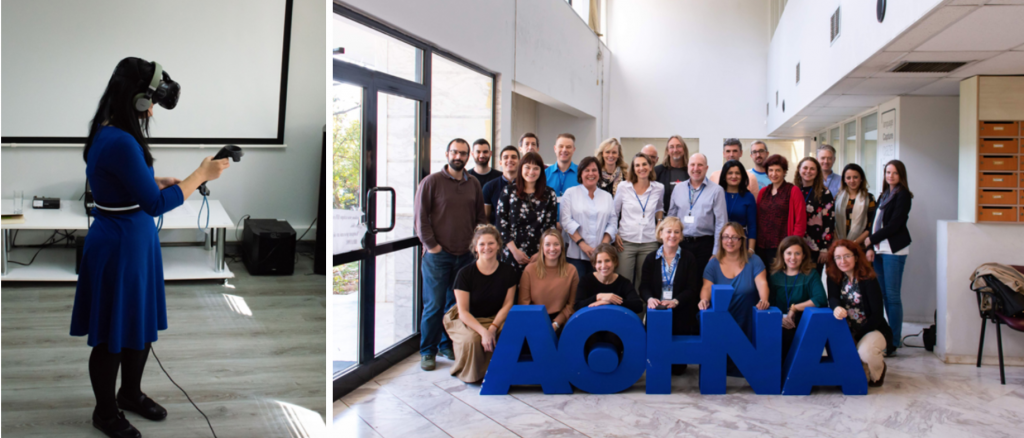Why EMOTIVE? My insider experiences as a visiting scholar at the University of Glasgow
Museum literature taught me that “memorable experiences have an emotional label”; so, “what is emotionally experienced, will be remembered” (Falk & Dierking, 2013). Learning literature, on the other hand, made me realize that there are more layers between “knowing” and “applying” something; The first one is a cognitive process that is limited to knowledge acquiring and recalling, while the later is an extension of knowing that demonstrates a deeper level of learning, understanding, and skills development.
My involvement with the EMOTIVE project takes full credit for my intellectual transition from knowing about the power of emotion in creating memorable museum experiences to applying or using emotions for creating such experiences. For two months in the autumn of 2018, I had the opportunity to work closely with the University of Glasgow EMOTIVE team led by Dr Maria Economou, as a visiting scholar supported by a scholarship from the Nahrein Network and the British Institute for the Study of Iraq. The experience of evaluating the EMOTIVE Ebutius’s Dilemma prototype experience at the Hunterian Museum powerfully reinforced my prior knowledge. It also extended my understanding about the power of emotional storytelling and empathy-based interpretation in creating deep and memorable connection with our humanity’s collective history. Such connection can effectively change people’s perception and actions for better.
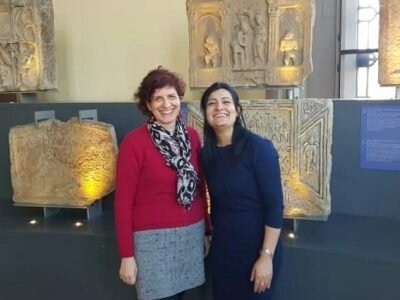
During this time I also had the great opportunity to meet the rest of the EMOTIVE partners during the 2nd EMOTIVE Users Workshop in Athens (November 2018). During the packed two days of the workshop (Day One and Day Two), I engaged in and contributed to the ongoing evaluation discussions and witnessed first-hand how strongly emotional stimuli can deepen experience, engagement, and memorability with and in any environment.
The voice of the slave Hermeias, from the EMOTIVE Ancient Agora experience is still lingering in my head.Not only did it bring the ancient Agora to life for me, but also made my brief Agora site visiting experience one of the most enjoyable, informative, and memorable historic site-visiting experiences in my life. Though simple, the experience was eloquently and creatively crafted to fuel engagement, curiosity, and memorability.
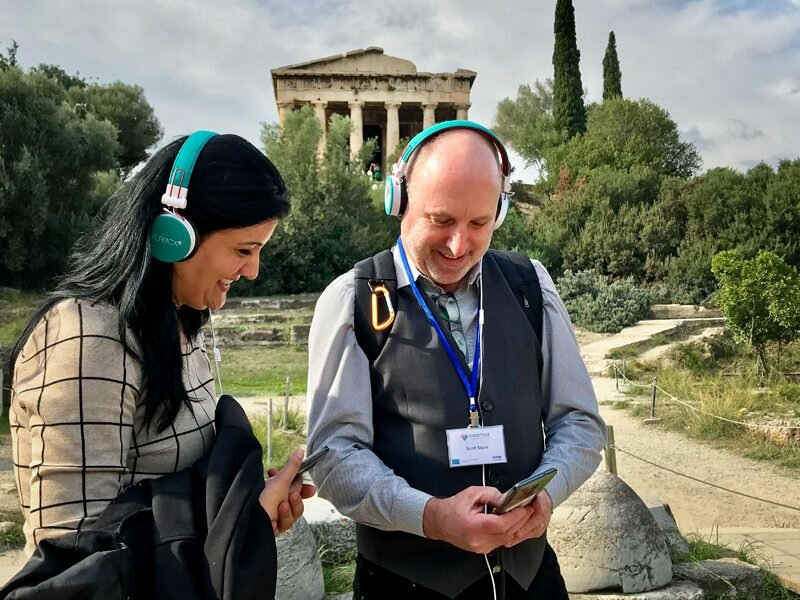
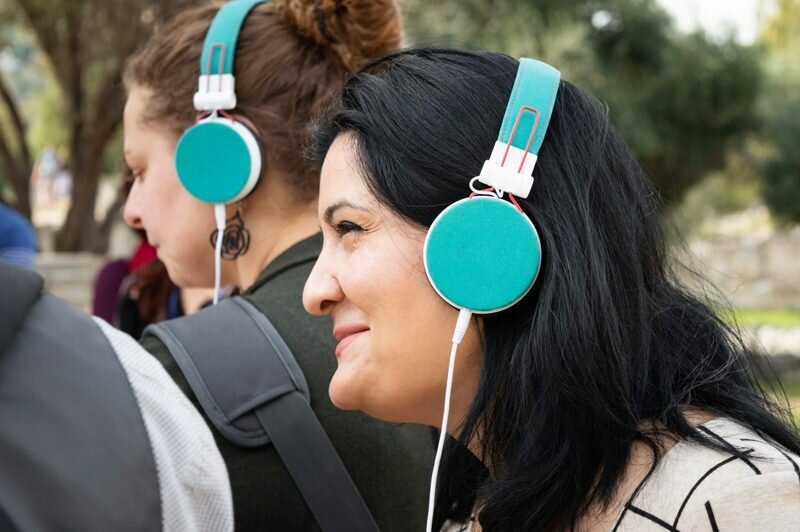
Why memorability should matter in cultural heritage?
It seems that memorability or “being remembered” has been a vital part of people’s hope, and not only the role of museums and historic sites, since time immemorial. We see it everywhere; whether it is a depiction of a battle on an ancient mural or a dying person’s wish, humans seem to share a desire for/seek being remembered and memorable. As collectors and interpreters of memories and stories, cultural heritage institutions have societal and institutional roles and responsibilities of making history memorable and relevant for understanding the past and helping build the present and future. Emotional storytelling is proving an effective means for achieving this goal.
EMOTIVE development and research
During my work with the EMOTIVE team, I learned more about state-of-the-art research, methodology, and tools for developing and evaluating effective storytelling and emotional engagement in museums and historic sites. The high interdisciplinarity nature of the EMOTIVE project further enriched and extended my own interdisciplinary background and research training from my graduate studies at the University of Calgary in Canada. From my research during my PhD, I learned that storytelling and interactive digital technologies have great potential for creating powerful and memorable experiences and interactions with heritage (including that which is endangered).
The EMOTIVE’s evaluations have broadened my perspective on the big impact of “emotional storytelling” on understanding and experiencing heritage collections, buildings, and sites. As an architect and digital cultural heritage scholar, I have become even more appreciative of the power and effectiveness of interdisciplinary thinking, practice, and research in managing and interacting with cultural heritage. One main takeaway from my EMOTIVE insider experience is that museum architects and designers need to shift their focus from spatial design to experience design that involves other disciplines beyond those in the traditional design fields. I also obtained a great insight, experience, and training in the coordination and management of large-scale and multi- and remote-partner projects.
I was able to transfer all this new knowledge, methodologies, and access to new tools that I obtained from my EMOTIVE experience hosted by the University of Glasgow, to another part of the world when I returned back home to the Kurdistan region of Iraq, a place with a very rich heritage (often endangered) and stories to tell but with very limited tools to facilitate this storytelling and engage local communities. I am currently in the process of applying these skills and transferring my EMOTIVE experiences to the Slemani Museum, Iraq’s second largest museum. Thanks to EMOTIVE and the support from its team, the Slemani Museum will soon have its first EMOTIVE experience to emotionally engage its visitors with the Stela of Iddi-Sin’s, King of Simurrum from the old Babylonian era (c. 2000-1600 BCE), and other artefacts at the Museum’s “In-Writing” exhibit. This experience will be a first of its kind in any Iraqi museum where unique and world-class cultural heritage artefacts are waiting to reveal their stories and emotionally engage with a largely disengaged local community. Aside from giving me access to a digital storytelling tool, my insider EMOTIVE experience has given me great support, insights, ideas, methodologies, and evaluation approaches to develop and evaluate such experiences in the context of Iraq.
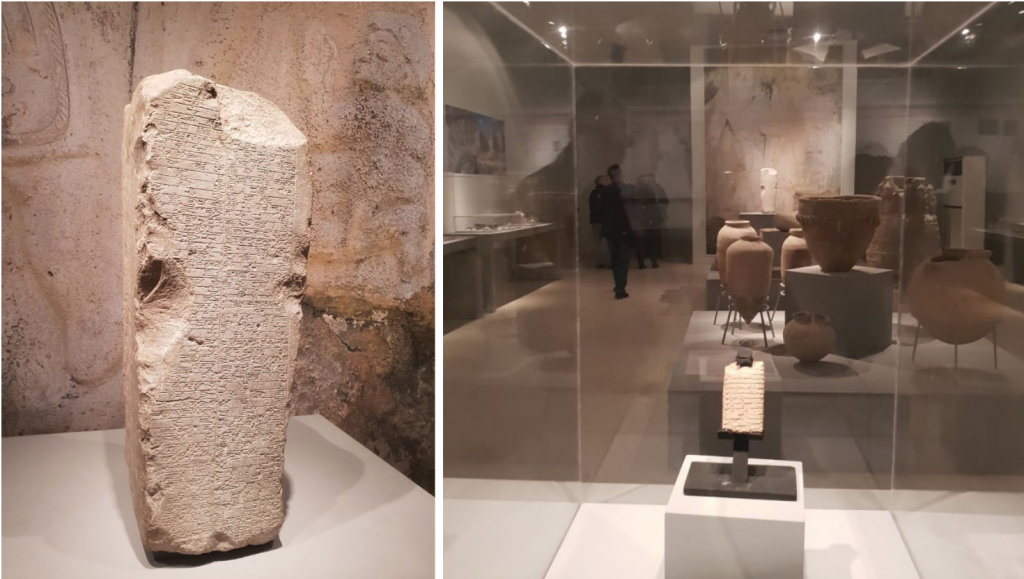
Last but not least, I cannot talk about my EMOTIVE insider experience without acknowledging the wonderful people and supportive scholars who made this possible. So, I take this opportunity to express my deep appreciation and thankfulness to my host, Dr Maria Economou and her research assistant, Dr Hilary Young, at the University of Glasgow (UK) for all the learning and growth opportunities they created and involved me in and for being such wonderful, accommodating, and supportive scholars. Working with them was a great privilege and a truly rewarding experience. Meeting in person Dr Maria Roussou, Dr Akrivi Katifori, Vassilis Kourtis, Chris Lougiakis and the rest of the EMOTIVE team from the Athena Research and Innovation Center (Greece) has also been a real honor and privilege, as I was impressed and inspired by their innovation. My learning and experience about great cultural heritage storytelling design and delivery in a digital platform and large-scale project communications could not have been gained without the creative minds and dedication of Breffni O’Malley and Dr Karolina Badzmierowska from Noho (Ireland). The inspiring works of Dr Sara Perry and her team from the University of York (UK) expanded my perspective about different interpretation approaches in cultural heritage. The helpfulness and kindness of Dr Souheir Mili Coniglio from Diginext in France and the Athena Research and Innovation Center team enlightened my understanding of the use of the promising EMOTIVE tools, and specifically the SBE and VSE platforms for developing EMOTIVE experiences. The tireless and excellent coordination from Hara Stefanou of such a big-scale, remote and multiparter project from Hara Stefanou and her EXUS (Greece & UK) team substantially added to my project management experience. Finally, my thanks and appreciation also go to the rest of the EMOTIVE team members whom I e-met, met in person, or read about from the rest of the partners, Consiglio Nazionale delle Ricerche in Italy and INRIA Institut National de Recherche En Informatique et Automatique in France, who have directly or indirectly contributed to my EMOTIVE learning experience.
Blog post written by: Rozhen Mohammed
Dr. Rozhen K. Mohammed-Amin is an architect and a scholar with an interdisciplinary background and research interest in the confluence of digital technology and cultural heritage and museology. She is the founder and head of the Digital Cultural Heritage (DCH) Research Group at the Sulaimani Polytechnic University in Kurdistan Region of Iraq, where she also teaches at the City Planning Department. She is also secretary of RASHID International e.V and a member of the UKRI Peer Review College. She is the proposal writer and co-director of the Cultural Heritage Network (CHN) project, which is a joint project between her group and the Universities of Reading and Leicester, funded by UCL’s Nahrein Network. She has academic activities and has presented in over 18 countries across North America, Europe, Asia, and the Middle East. She joined the EMOTIVE project team at the University of Glasgow under the supervision of Dr Maria Economou on a joint BISI-Nahrein Network visiting scholarship from September to November 2018.
